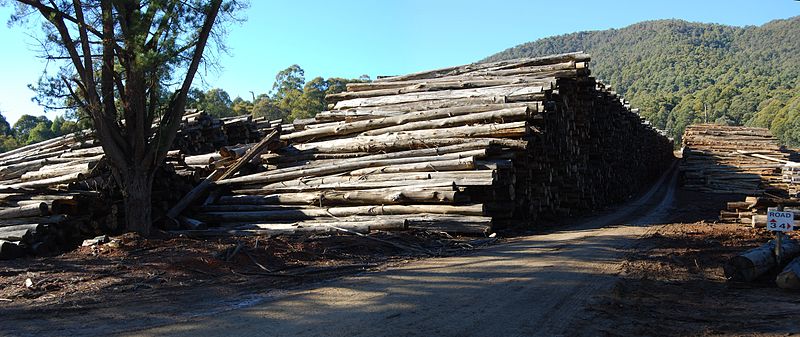REVIEW: Logging and Deforestation
Logging & Deforestation

Logging in Australia. Photo courtesy of Wikimedia.
Cutting down trees for use in paper and wood products, as well as deforestation to create agricultural and grazing lands for livestock greatly impact the environment. Logging and deforestation lead to greater rates of soil erosion because there are no roots to help keep it in place. It decreases the amount of organic matter like leaves and twigs that could be used to regenerate the topsoil. Soil erosion can affect water quality and damage aquatic ecosystems by clogging rivers and lakes, decreasing light availability for aquatic plants, burying coral reefs and disrupting water levels.
Climate is also impacted by deforestation and logging. Trees are a natural carbon sink, meaning they capture carbon dioxide and prevent it from being released into the atmosphere. Therefore, trees help reduce greenhouse gas emissions and global warming.
There are some logging methods that less harmful to the environment than others.
- Selective cutting -- allows most trees to remain to minimize impacts to habitat and loss of soil. In this method, single trees or groups of trees are removed from an area.
- Seed tree cutting -- removes most trees, but leaves a few to scatter their seeds to regrow the forest. Causes destruction to habitats and increases soil erosion, and also leads to loss of forest diversity.
- Strip cutting -- trees removed in large swaths, but timed so that only one area is logged at a time, to maintain some forest habitat and control soil erosion.
- Clearcutting -- most destructive to ecosystems and soil erosion; when a whole area of forest is logged of all its trees.